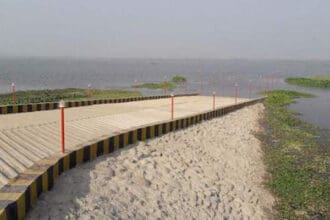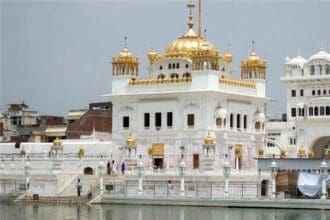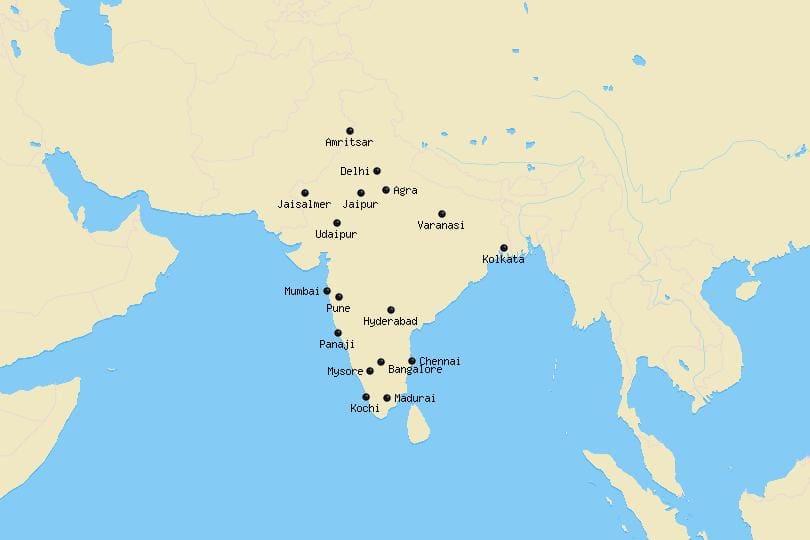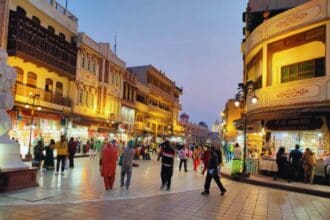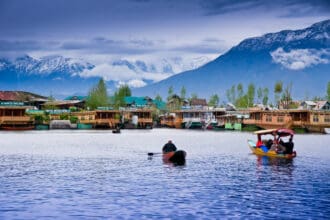Ropar, also known as Rupnagar , is a historically significant district in Punjab, India. Nestled along the banks of the Sutlej River, this region has been a cradle of ancient civilizations and a melting pot of diverse cultures. From archaeological wonders to serene natural landscapes, Ropar offers a unique blend of history, spirituality, and natural beauty. In this article, we will explore the top 5 places to visit in Ropar , providing you with detailed insights, practical tips, and fascinating stories that make this destination truly unforgettable.
1. Ropar Archaeological Museum: A Window into Ancient Civilizations
Ropar Archaeological Museum , located near the excavation site of the ancient Indus Valley Civilization, is a treasure trove of artifacts that narrate the story of human civilization in this region. Managed by the Archaeological Survey of India (ASI), the museum houses relics dating back to the Harappan era, making it one of the most important historical sites in Punjab.
Exploring the Exhibits
The museum features a wide array of artifacts, including pottery, tools, coins, seals, and terracotta figurines unearthed during excavations at Ropar. These items provide valuable insights into the lifestyle, trade, and culture of the people who lived here thousands of years ago. The exhibits are divided into sections based on different periods, such as the Harappan, Maurya, and Gupta eras.
Historical Significance
Ropar was an important center during the Indus Valley Civilization, and the excavations conducted here have revealed evidence of advanced urban planning, metallurgy, and craftsmanship. The site also showcases layers of habitation from various periods, highlighting the continuity of human settlement in the region.
Things to Do at Ropar Archaeological Museum
History enthusiasts can spend hours exploring the museum’s galleries and learning about the evolution of human civilization. Guided tours are available, providing detailed insights into the significance of each artifact. For photography enthusiasts, the museum offers numerous opportunities to capture the intricate details of ancient relics.
Best Time to Visit
The best time to visit the museum is between October and March when the weather is pleasant and ideal for sightseeing. Early mornings and late afternoons are particularly enchanting, as the soft sunlight enhances the ambiance of the exhibits.
“Ropar Archaeological Museum is not just a collection of artifacts; it’s a journey through time.”
2. Satluj Riverfront: A Serene Escape
Satluj Riverfront , located along the banks of the Sutlej River, is a picturesque destination that offers breathtaking views of the river and surrounding landscapes. This tranquil spot is perfect for nature lovers, photographers, and those seeking a peaceful retreat.
Exploring the Natural Beauty
The riverfront is dotted with lush greenery, walking paths, and seating areas where visitors can relax and enjoy the soothing sound of flowing water. During sunrise and sunset, the river reflects the golden hues of the sky, creating a mesmerizing sight. The calm waters and cool breeze make it an ideal spot for picnics and leisurely walks.
Activities for Tourists
Boating is the primary activity at Satluj Riverfront, with paddle boats and motorboats available for rent. For birdwatchers, the riverbanks are home to diverse avian species, including kingfishers, herons, and migratory birds. Adventure seekers can also explore nearby trails that lead to scenic viewpoints and hidden waterfalls.
Conservation Efforts
The river plays a crucial role in maintaining the ecological balance of the region. Conservation efforts are underway to protect the biodiversity of the area and ensure its preservation for future generations. Visitors are encouraged to follow eco-friendly practices and contribute to the preservation of this natural wonder.
Tips for Visitors
To make the most of your visit, arrive early in the morning when the wildlife is most active. Carry snacks and water, as there are limited facilities near the riverfront. Respect the environment by avoiding littering and maintaining cleanliness.
3. Gurudwara Tibbi Sahib: A Spiritual Haven
Gurudwara Tibbi Sahib , located in Ropar, is a sacred shrine dedicated to Guru Gobind Singh, the tenth Sikh Guru. This gurudwara holds immense religious significance and attracts thousands of devotees every year, especially during festivals like Vaisakhi and Guru Purab .
The Architectural Grandeur
The gurudwara’s architecture reflects traditional Sikh styles, with intricate carvings, domes, and arches that exude divine energy. The main sanctum houses relics associated with Guru Gobind Singh, including his weapons and personal belongings. Visitors can also admire the serene ambiance of the gurudwara premises, surrounded by lush greenery and flowering plants.
Spiritual Significance
Gurudwara Tibbi Sahib is believed to be the site where Guru Gobind Singh rested during his travels. Devotees believe that visiting the gurudwara brings peace, prosperity, and spiritual enlightenment. During festivals, the gurudwara comes alive with vibrant decorations, traditional music, and elaborate rituals.
Things to Do at Gurudwara Tibbi Sahib
Pilgrims can participate in daily prayers, langar (community kitchen), and kirtan (devotional singing) conducted with great devotion. For those interested in photography, the gurudwara offers numerous picturesque spots, especially during sunrise and sunset. Guided tours are available, providing insights into the gurudwara’s history and religious significance.
Best Time to Visit
The best time to visit Gurudwara Tibbi Sahib is between October and March when the weather is pleasant and ideal for sightseeing. Early mornings and late afternoons are particularly enchanting, as the soft sunlight enhances the gurudwara’s spiritual ambiance.
4. Nangal Dam: A Marvel of Engineering
Nangal Dam , located about 60 kilometers from Ropar, is one of the largest hydroelectric projects in India. Built across the Sutlej River, this dam serves as a vital source of irrigation and electricity while offering stunning views of the surrounding landscape.
Exploring the Scenic Beauty
The dam’s reservoir spans across vast stretches of water, flanked by lush green hills and dense forests. Visitors can enjoy boating on the reservoir, which provides a unique perspective of the dam’s engineering marvels and the natural beauty of the area. The calm waters and cool breeze make it an ideal spot for picnics and leisurely walks.
Engineering Feats
Completed in 1962, Nangal Dam was part of the Bhakra-Nangal Project, one of the largest infrastructure projects in post-independence India. It generates approximately 1,000 MW of electricity and supports agricultural activities in Punjab, Haryana, and Rajasthan. Educational tours are organized for students and researchers to learn about the dam’s construction and operational mechanisms.
Activities for Tourists
Boating is the primary activity at Nangal Dam, with paddle boats and motorboats available for rent. For nature lovers, the surrounding forests are home to diverse flora and fauna, including migratory birds and wildlife such as deer and leopards. Birdwatchers will delight in spotting species like kingfishers, herons, and pelicans.
Tips for Visitors
To make the most of your visit, arrive early in the morning when the weather is cool and the reservoir is less crowded. Carry snacks and water, as there are limited facilities near the dam. Respect the environment by avoiding littering and maintaining cleanliness.
5. Kila Raipur Sports Village: A Hub of Rural Sports
Kila Raipur Sports Village , located near Ropar, is famous for hosting the annual Kila Raipur Rural Olympics , often referred to as the “Rural Olympics of India.” This unique event celebrates rural sports and traditions, attracting participants and spectators from all over the country.
Exploring the Sports Village
The village features well-maintained grounds, tracks, and facilities for various sports, including bullock cart races, kabaddi, wrestling, and tug-of-war. The event showcases the strength, agility, and endurance of rural athletes, reflecting the rich cultural heritage of Punjab.
Cultural Significance
Kila Raipur Sports Village is a symbol of Punjab’s vibrant rural culture and traditions. The Rural Olympics serve as a platform to promote traditional sports and celebrate the spirit of unity and competition. During the event, the village comes alive with vibrant decorations, traditional music, and elaborate rituals.
Things to Do at Kila Raipur Sports Village
Visitors can participate in or watch various sports events, interact with local athletes, and enjoy traditional Punjabi cuisine. For photography enthusiasts, the village offers numerous opportunities to capture the energy and excitement of the Rural Olympics.
Best Time to Visit
The best time to visit Kila Raipur Sports Village is during the Rural Olympics, which is usually held in January or February. Early mornings and late afternoons are particularly enchanting, as the soft sunlight enhances the ambiance of the events.
Conclusion
Ropar is a destination that offers a perfect blend of cultural richness, historical significance, and natural beauty. From the ancient relics of Ropar Archaeological Museum to the serene landscapes of Satluj Riverfront, each place tells a story of resilience, creativity, and harmony. Whether you’re seeking adventure, spirituality, or cultural immersion, the top 5 places to visit in Ropar promise an enriching experience.
“Ropar is more than just a travel destination; it’s a journey into the heart of Punjab’s heritage.”
As you plan your trip, remember to respect the local customs and traditions. Engage with the people, savor the flavors, and immerse yourself in the vibrant tapestry of Ropar’s life. Your visit to Ropar will undoubtedly leave you with memories to cherish for a lifetime.
FAQs
- What is the best time to visit Ropar?
The best time to visit Ropar is from October to March when the weather is pleasant and ideal for sightseeing. - How do I reach Ropar?
Ropar is well-connected by road and rail. The nearest airport is Chandigarh International Airport, approximately 70 kilometers away. - Are there any entry fees for visiting Ropar Archaeological Museum?
Yes, there is a nominal fee for entering the museum, but guided tours may have additional charges. - Can I camp near Satluj Riverfront?
Yes, camping is allowed near Satluj Riverfront, but it’s advisable to hire local guides for safety and convenience. - Is Nangal Dam safe for children?
Absolutely! Nangal Dam is a family-friendly destination, offering educational and fun experiences for children. - What should I pack for a trip to Ropar?
Essential items include warm clothing, sturdy shoes, sunscreen, insect repellent, and a first-aid kit. - Are guided tours available for Gurudwara Tibbi Sahib?
Yes, guided tours are available, providing detailed insights into the gurudwara’s history and religious significance. - What are some must-try dishes in Ropar?
Some must-try dishes include makki di roti, sarson da saag, and traditional Punjabi sweets like jalebi and lassi. - Is Ropar safe for solo travelers?
Ropar is generally considered safe for solo travelers, but it’s always advisable to stay cautious and informed. - Where can I stay in Ropar?
Ropar offers a range of accommodations, from luxury hotels to budget guesthouses, catering to different preferences.



